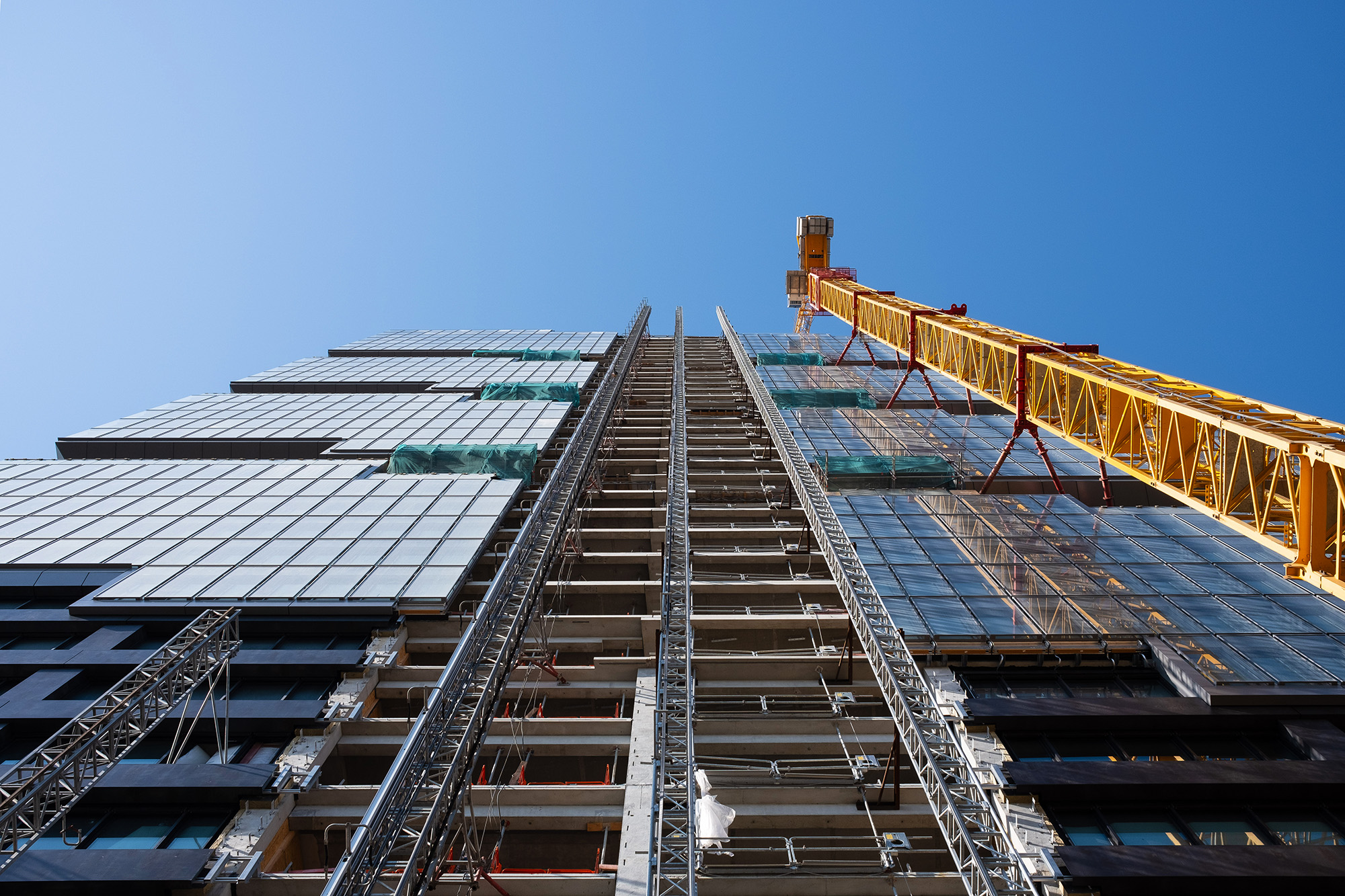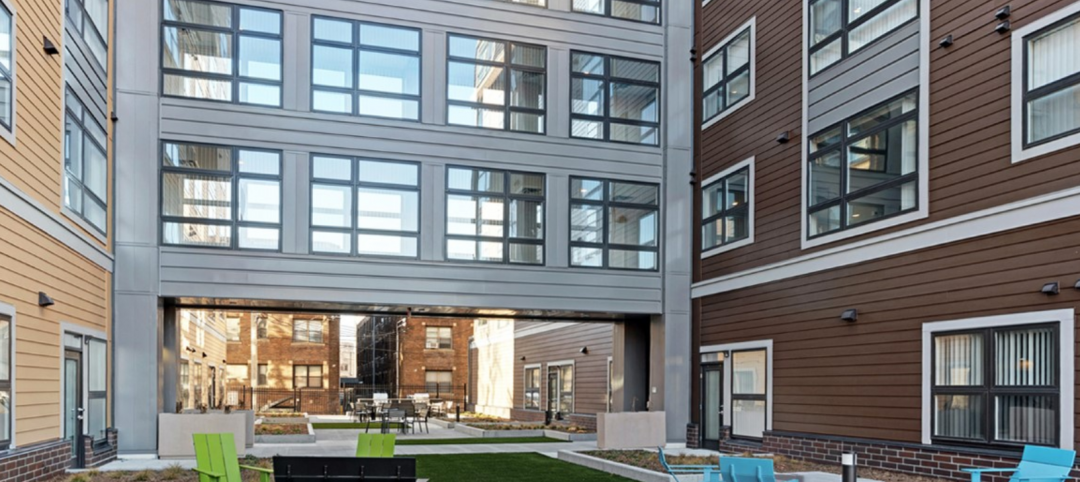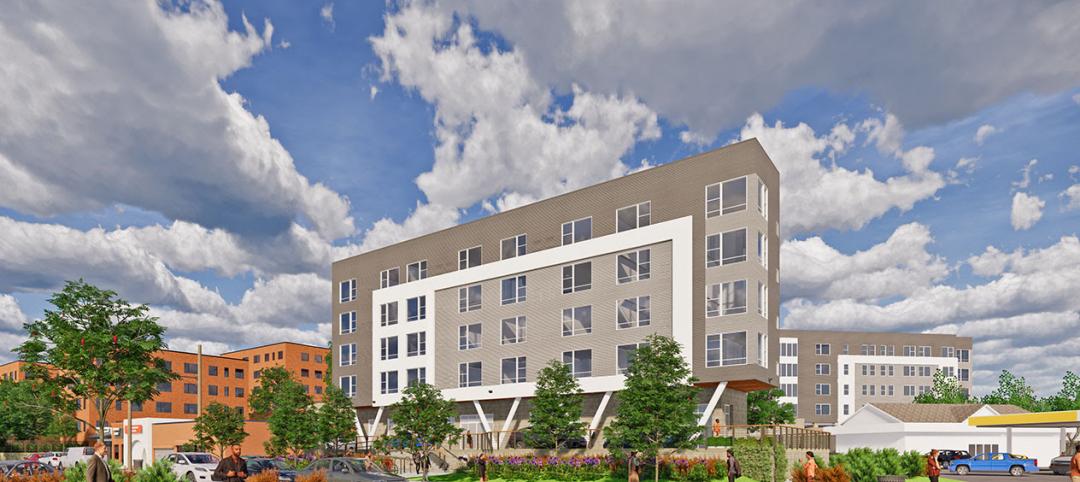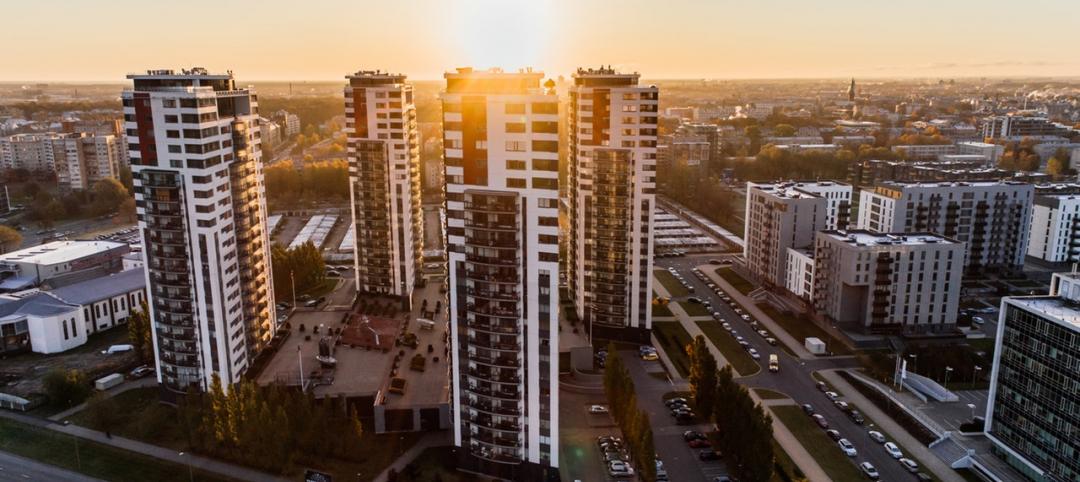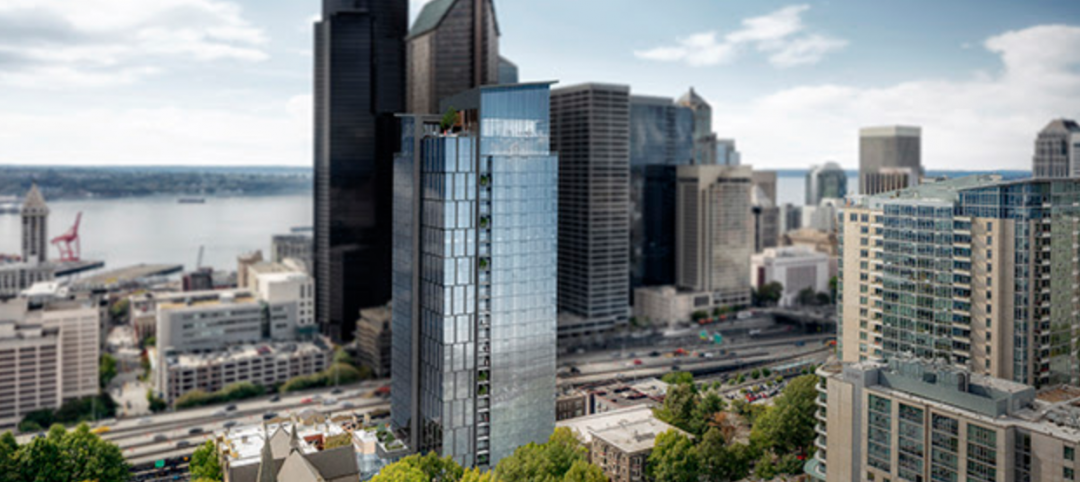Yardi Matrix has released its Q4 2023 Multifamily Supply Forecast, emphasizing a short-term spike and plateau of new construction. According to the report, Yardi finds that construction starts have remained "relatively robust" in the first half of 2023, with the under-construction pipeline increasing by 7.6% in Q3.
Because of this, new activity is starting to slow. The forecast for project completions has increased by 5.8% for 2024 and 6.2% for 2025. Completions for later years are forecasted to decrease by roughly 5 percent, according to Yardi.
Long-Term Multifamily Supply Forecast
"We continue to expect a mild recession will start in late 2023 or early 2024," the report states. Yardi's forecast for 2026 has therefore been reduced by 5.8% to 377,622 units, while the baseline forecast for 2027 and 2028 completions has been similarly reduced by 4.7% and 5.4% respectively.
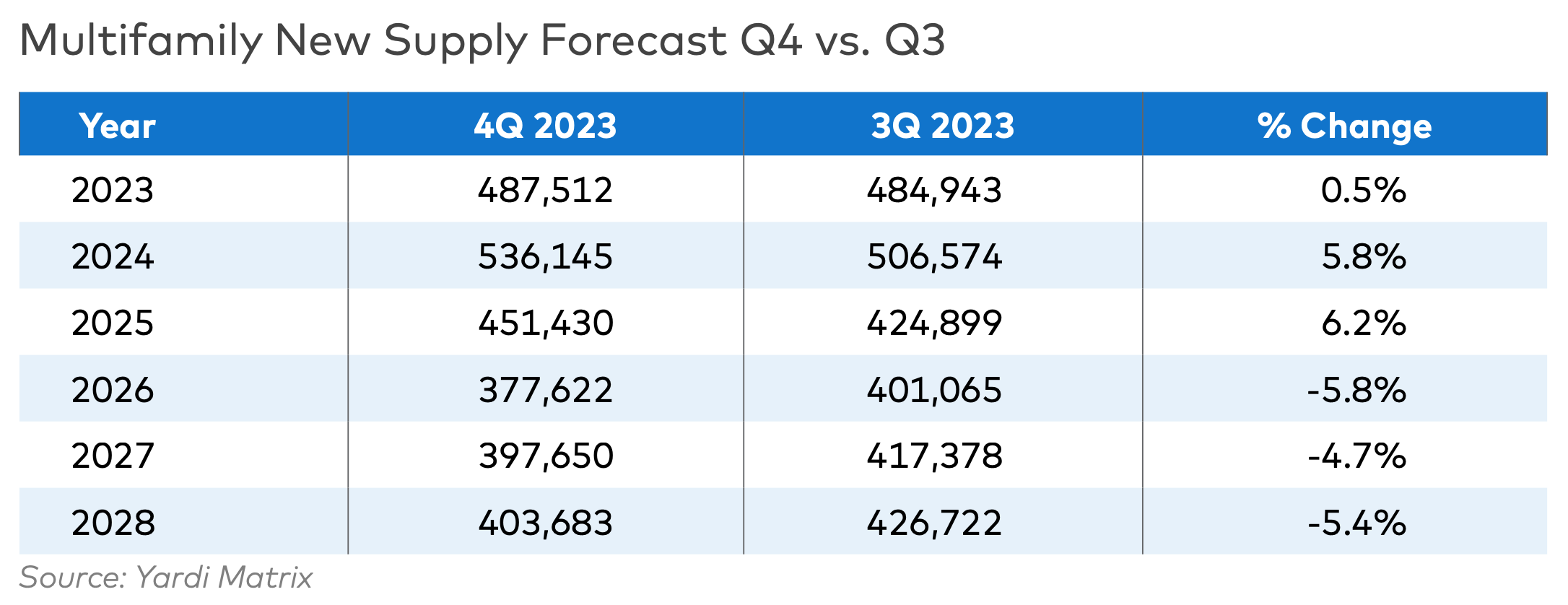
For the multifamily markets monitored by Yardi Matrix, there are currently 1.2 million units within the under-construction pipeline. Of these units, just under 480,000 are in the lease-up phase, which is in line with the trailing six-month average of 483,000 units but represents a substantial 15.9% increase from the figures of the previous year. Most of these units are expected to be finalized either by the end of 2023 or during the first half of 2024.
What does this mean for 2024?
Though short-term construction starts remained elevated through the first half of 2023, several findings from the third quarter suggest that new development activity is slowing. The near flat growth recorded in Q3 is a sharp departure from the growth the planned pipeline recorded post pandemic—another sign that development interest is slowing, according to Yardi.
Overall, Yardi Matrix anticipates an uptick in construction completions in the next two years. Yardi's construction start data reached its year-over-year peak in May 2023. Both planned and prospective pipelines plateaued in Q3.
"Our baseline forecast envisions new supply bottoming in 2026 at around 377,000 units, while the alternative downside forecast models new supply bottoming in 2026 at 335,000 units," writes Ben Bruckner, Senior Research Analyst, Yardi Matrix.
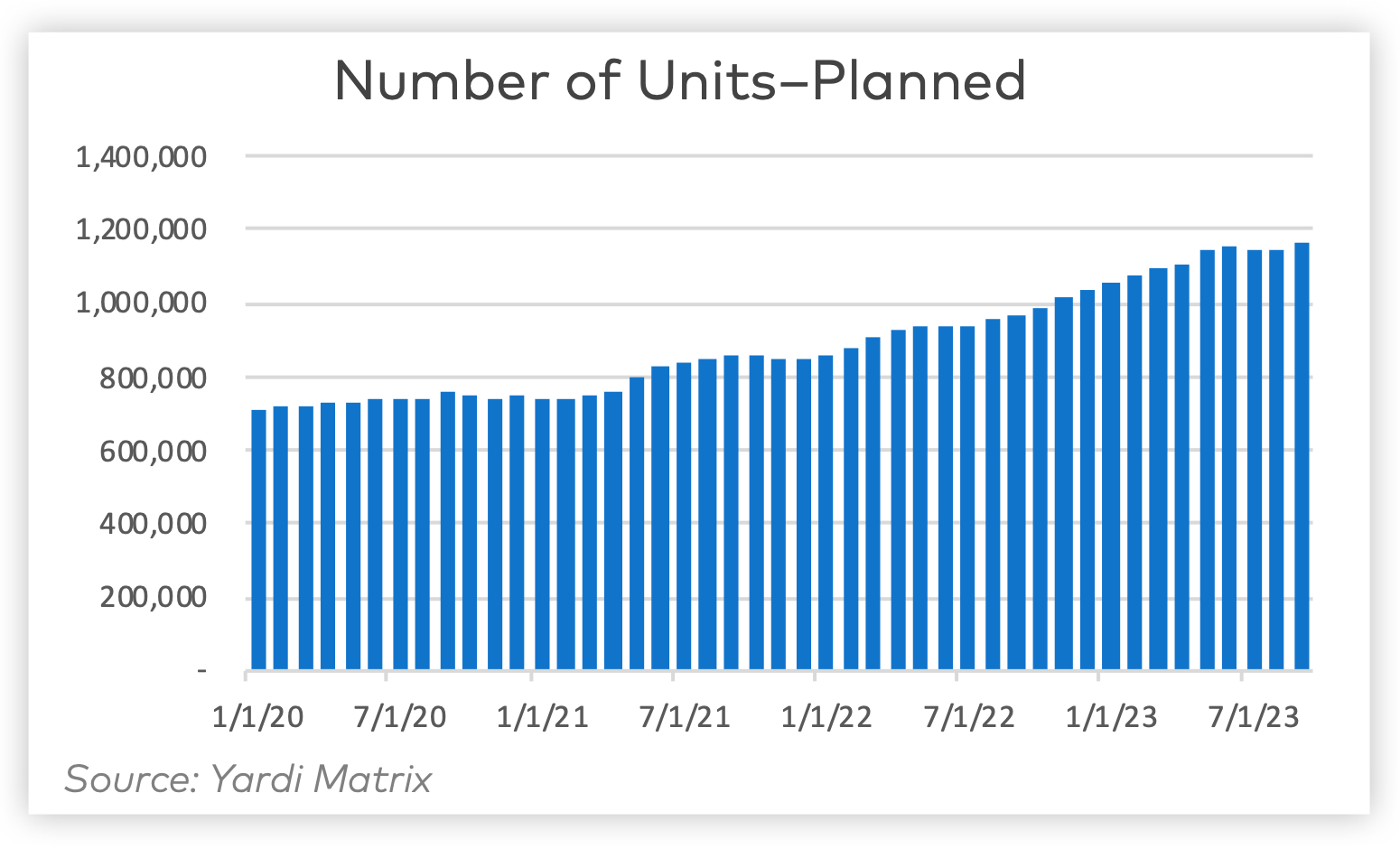
Review the latest Multifamily Supply Forecast here.
Yardi Matrix offers the industry’s most comprehensive market intelligence tool for investment professionals, equity investors, lenders and property managers who underwrite and manage investments in commercial real estate. Yardi Matrix covers multifamily, student housing, industrial, office and self storage property types. Email matrix@yardi.com, call 480-663-1149 or visit yardimatrix.com to learn more.
Related Stories
Multifamily Housing | Dec 4, 2019
9 tips on creating places of respite and reflection
We talked to six veteran landscape architects about how to incorporate gardens and quiet spaces into multifamily communities.
| Nov 20, 2019
ClosetMaid to celebrate 55 years in business at the 2020 NAHB International Builders Show
Company to celebrate 55 years in storage and organization with a visit by celebrity guest Anthony Carrino.
Multifamily Housing | Nov 20, 2019
Over 400 micro units spread across two communities under development in Austin
Transwestern is developing the projects.
Multifamily Housing | Nov 14, 2019
U.S. multifamily market stays strong into 4th quarter 2019
October performance sets a record amid rising political pressure to cap rent growth, reports Yardi Matrix.
Multifamily Housing | Nov 8, 2019
The Peloton Wars, Part III - More alternatives for apartment building owners
ProForm Studio Bike Pro review.
Multifamily Housing | Nov 7, 2019
Multifamily construction market remains strong heading into 2020
Fewer than one in 10 AEC firms doing multifamily work reported a decrease in proposal activity in Q3 2019, according to a PSMJ report.
| Nov 6, 2019
Solomon Cordwell Buenz opens Seattle office, headed by Nolan Sit
National design firm brings residential high-rise expertise to the Pacific Northwest
| Nov 6, 2019
Passive House senior high-rise uses structural thermal breaks to insulate steel penetrations
Built to International Passive House standards, the Corona Senior Residence in Queens, N.Y., prevents thermal bridging between interior and exterior steel structures by insulating canopies and rooftop supports where they penetrate the building envelope.



